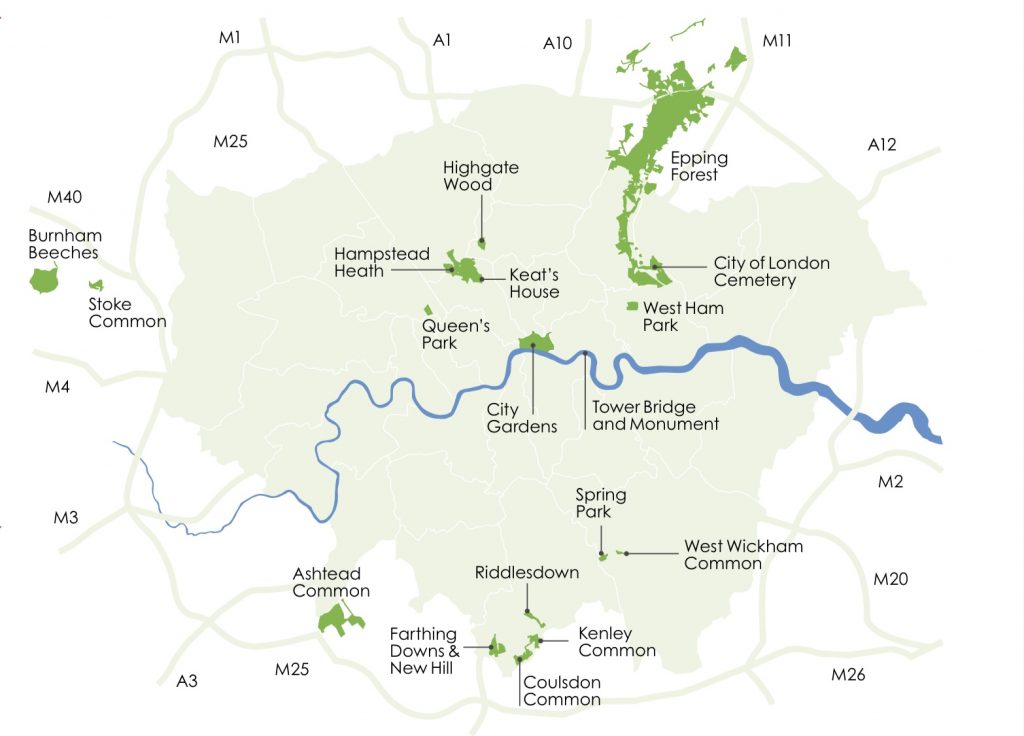
The City of London Corporation manages a large number of open spaces across Greater London, Essex, Buckinghamshire and Surrey. These include more than 150 gardens, churchyards, water fountains and courtyards. The single largest open space in Greater London and Essex is Epping Forest, at 2,400-hectare (5,900-acre) of ancient woodland running from Epping to Forest Gate. It is 12 miles long and 2.5 miles wide. In addition to maintaining the Forest itself, over the past 60 years, the City of London also purchased an additional 14 parcels of buffer land totalling 735 hectares (1,800-acre) to help preserve the environmental setting, landscape heritage and quality of the Forest.
Site / Charity Management Plans:
Burnham Beeches & Stoke Common Consultative Group
Other helpful information and links:
Epping Forest Map
Epping Forest Management Plan
Epping Forest Act
Epping Forest Byelaws
Volunteer in Epping Forest
Donate to Epping Forest